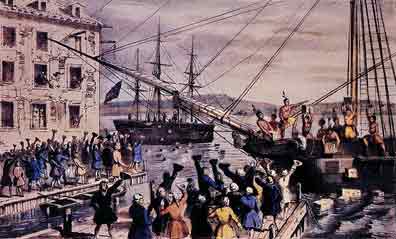When you are enjoying a cup of tea, remember that you are sharing in a most fascinating history.
Tea has a very rich and amazing history! Since the first cup was brewed almost 5,000 years ago, the popularity of tea has increased to the point that it is the second most popular beverage in the world, being surpassed only by water. During its long history, tea has influenced various cultures, world leaders, and even a couple of wars.
So how did it all start? Do we know when the very first cup of tea was served?
Well, according to Chinese legend, the story of tea began in 2737 BC when Emperor Shen Nung, a scientist as well, had the habit of boiling his water before drinking it to cleanse it before it was consumed. While on a trip to a distant realm in China, he and his caravan stopped to rest, and while the water was being boiled, some leaves from a nearby bush blew into the pot. The Emperor noted a delightful aroma and, upon sipping the beverage, proclaimed it as “heaven sent”. Wouldn’t you have loved to have been there? Thus the world’s obsession with tea was born and since then tea has evolved into some 15,000 known varieties!
So how did tea end up becoming such a beloved drink all over the world?
In ancient China, tea was a costly drink, consumed only by the rich. However, following the fall of the Mongolian Empire in 1368 AD, the whole population of China began to experience tea. Tea was then introduced to Europe when the Portuguese gained the first right of trade with China in 1564. They also began to trade with Japan. At first it was very expensive but in time, by the year 1675, tea was sold in common shops throughout Holland. Between 1652 and 1654, tea first reached Great Britain where it quickly replaced ale as the national drink of choice. Sounds like that was a good thing, indeed!
Japan was first introduced to tea when the Buddhist priest Yeisei observed the incredible benefits of tea for religious meditation. Once tea was introduced in Japan, it spread like wildfire through the royal court, monasteries, and other sections of Japanese society.
Japan is currently the sixth largest producer of green tea in the world. The Japanese use it for drinks, ice cream, noodles, snacks, and other products. They win for variety! Japanese plantations are superb and magnificently maintained. Their gardens are different from any other plantations in the world, as the bushes are cultivated side by side in long strips rather than being spaced apart. This gives the impression of smooth waves of green tea bushes undulating over a landscape. It is truly beautiful.
Ever wonder where the practice of afternoon English teatime came from? Anna, the Duchess of Bedford, began the tradition in the early 1800s. She would often become faint in the afternoon and so began to invite friends over at 5:00 for tea and snacks. The practice became so popular and soon spread into all classes of British society. A passion for tea and all things Orient had swept through Europe. England eventually started their own tea plantations in India in 1834.
 Onto America….
Onto America….
Holland first introduced tea to the Americas in 1650 to the Dutch colony of New Amsterdam (modern day New York). You read those dates right – tea was first introduced to America before it was introduced to England! Tea was not publicly for sale in America until 1690 but it soon became a staple of trade between the colonies and England. As you remember, tea was highly taxed and was a major factor in the colonists drive toward independence. Tea was the focus of the Boston tea Party as well as a factor in the American Revolution.
England in particular has tea intricately woven into their society, while all around the world, little girl tea parties and tea houses have celebrated this rich history and hopefully will continue to do so.
It is still mainly grown in the Eastern part of the world, and it has easily beaten out coffee, sodas, and other less healthy alternatives, to take center stage as the second most consumed beverage, after water. And although green tea has recently seen a revival due to its purported health benefits, black tea still accounts for over 90% of all tea sold in the West.
Tea has now blossomed into thousands of varieties. And they all come from the same plant, Camellia sinensis (“sinensis” means “Chinese” in Latin). Grown all around the world, and enjoyed from tip to tip of each continent, depending on how it is processed, tea falls loosely into five categories: BLACK TEA, GREEN TEA, OOLONG TEA, WHITE TEA, and RED TEA. The health benefits associated with all teas will promise to push this delightful beverage further into history books as a great drink that is also great for you!
